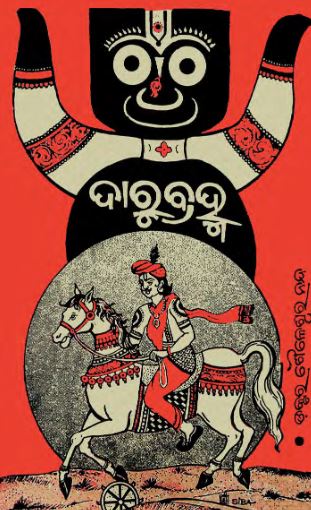The world of Odia literature has been graced with numerous works that transcend time, and among them, the essay collection “Darubrahma” by Saileswar Nanda stands out with exceptional brilliance. Published in 1979, this compilation of essays represents a rich mosaic of play and mythology, interwoven with the lucid imagination and profound knowledge of its author.
Saileswar Nanda, a prominent literary figure, brings his unique flair to “Darubrahma.” The title itself captivates, hinting at the divine convergence of the mundane and the sacred. “Darubrahma” translates to “the wooden incarnation of the divine” and strikes a chord with the cultural and spiritual fabric of Odisha. Nanda masterfully explores themes that span across mythological tales, cultural rituals, and philosophical inquiries, encapsulating the very essence of Odia heritage.
One of the remarkable features of “Darubrahma” is Nanda’s adept use of mythology. He delves into the pantheon of Hindu gods and goddesses, not merely to retell ancient stories but to decipher their profound symbolism. Through his essays, gods are not distant celestial beings, but relevant figures whose stories offer moral and ethical guidance. For instance, Nanda’s analysis of Lord Jagannath—the presiding deity of Odisha—seeks to unravel not just the deity’s religious importance but also the socio-cultural underpinnings that render Puri a significant pilgrimage site.
Nanda’s writing style further enhances the experience. His prose is both sophisticated and accessible, rich with descriptive imagery and thoughtful reflection. His essays move fluidly across time, drawing connections between ancient wisdom and contemporary relevance. In doing so, he invites readers to ponder deep-seated traditions and their implications in the modern era.
A major highlight of “Darubrahma” is the essay dedicated to the unique worship practices and festival celebrations in Odisha. Nanda captures the spirituality and fervor surrounding the Ratha Yatra, the annual chariot festival of Lord Jagannath. He describes in vivid detail the colossal chariots, the sea of devotees, and the surge of emotion that epitomizes this grand event. Through these narratives, readers can visualize the event vividly, almost hearing the rhythmic beats of the drums and the melodious chants of the pilgrims.
Moreover, Nanda’s essays often blend scholarly analysis with a storyteller’s charm. He presents complex mythological concepts with a simplicity that can be appreciated by everyone, from an erudite scholar to a lay reader. His exploration of lesser-known myths and folk tales provides fresh perspectives and uncovers the depth of Odia folklore.
“Darubrahma” also reflects Nanda’s philosophical leanings. He contemplates the nature of divinity, the cycle of life and death, and the eternal quest for truth. Through allegories and metaphors, he addresses existential queries, encouraging readers to engage in introspection and to find their own path to enlightenment.
In essence, “Darubrahma” by Saileswar Nanda is more than just a collection of essays; it is a literary tapestry that weaves together the strands of mythology, culture, and philosophy. It stands as a testament to the richness of Odia literature and the enduring relevance of mythological narratives in understanding the human condition. Published in 1979, yet timeless in its appeal, “Darubrahma” continues to inspire, educate, and enchant readers, reinforcing the cultural and spiritual legacy of Odisha.
Books Info
| Books name | Darubrahma/ଦାରୁବ୍ରହ୍ମ |
| Author | Saileswar Nanda |
| No Of pages | 118 |
| Publisher | Sathi Mahara |
| Publication | 1979 |
| Printed At | Sri Satyabadi Press |
| Distributor | NA |

